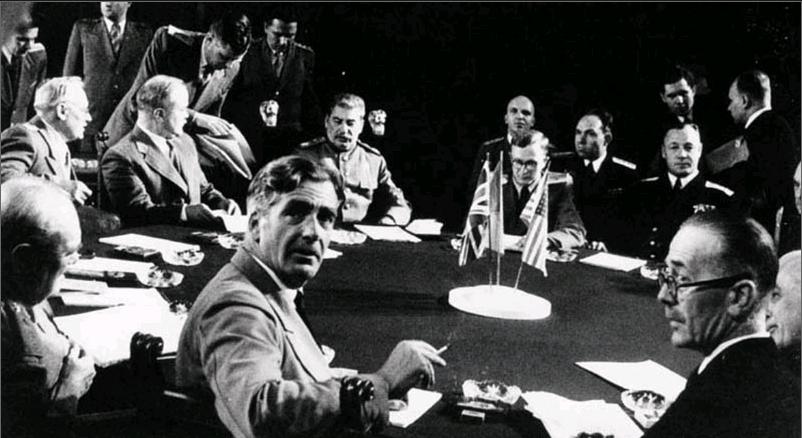Joining Hands Against Fascists
2015-08-17byLiuHaile
by+Liu+Haile

On the New Year of 1942, in Washington D.C., U.S. President Franklin Roosevelt, British Prime Minister Winston Churchill, Soviet Minister of Foreign Affairs Maxim Litvinov, and Chinese Minister of Foreign Affairs Soong Tse-ven signed on behalf of their respective counties a short document, later known as Declaration by United Nations, followed by representatives of 22 other countries the next day. The signing of the Declaration marked the formal formation of anti-fascist united front worldwide.
World War II was provoked by the fascists in Germany, Italy, and Japan, who expanded the scope and scale of their invasion, which in turn stimulated the coalition of anti-fascist countries across the world.
On March 11, 1941, the United States Congress passed the LendLease Act, authorizing the president to provide arms or any other defense materials to“the government of any country whose defense the President deems vital to the defense of the United States.”This symbolized that the United States completely abandoned its “neutral” policy and in practice got involved in the anti-fascist war in European countries.
Britain and the United States joined hands as allies to fight against German fascists. On the night when the German-Soviet Union war broke out, Winston Churchill announced that Britain would support the Soviet Union as well as all countries threatened by Adolf Hitler. On December 7, 1941, after the outbreak of the Pacific War, countries including the United States, China, and Australia declared war to Germany, Italy and Japan, formally joining the ongoing anti-fascist war, thus strengthening the global power against fascists.
From December 22, 1941, to January 14, 1942, U.S. President Franklin Roosevelt and British Prime Minister Winston Churchill coordinated their strategy and cooperation in the anti-fascist war at the first summit meeting, First Washington Conference, also known as the Arcadia Conference (ARCADIA was the code name for the conference), in Washington D.C. Also in attendance were other officials, including Harry Hopkins, special assistant of the U.S. president, Lord Beaverbrook, British Minster of War Production, and military leaders from both sides.
The conference didnt follow a strict agenda. Apart from the formal plenary session, there were other dedicated sessions and individual contacts, covering a wide array of issues in politics, military affairs, and economy.
Proposed by the United States, 26 attending anti-fascist countries signed and announced Declaration by United Nations:
“The Governments signatory hereto,
Having subscribed to a common program of purposes and principles embodied in the Joint Declaration of the President of United States of America and the Prime Minister of the United Kingdom of Great Britain and Northern Ireland dated August 14, 1941, known as the Atlantic Charter.
Being convinced that complete victory over their enemies is essential to defend life, liberty, independence and religious freedom, and to preserve human rights and justice in their own lands as well as in other lands, and that they are now engaged in a common struggle against savage and brutal forces seeking to subjugate the world,DECLARE:
(1) Each Government pledges itself to employ its full resources, military or economic, against those members of the Tripartite Pact and its adherents with which such government is at war.
(2) Each Government pledges itself to cooperate with the Governments signatory hereto and not to make a separate armistice or peace with the enemies.
The foregoing declaration may be adhered to by other nations which are, or which may be, rendering material assistance and contributions in the struggle for victory over Hitlerism.”
The conference also reconfirmed the “Europe first” strategy, approved the Super Gymnast Plan to launch a military operation in North Africa and established the Combined Chiefs of Staff and headquarters of the Southeast Asia Command to strengthen the military cooperation and unified command between the two countries as well as the American Commands in the China Theater and the China-Burma-India Theater.
Still, it discussed how to intensify the economic cooperation between the two countries during war time, leading to the establishment of joint committees for military supplies distribution, raw materials supply, and ship scheduling.
The first summit meeting of Britain and the United States laid a foundation for comprehensive cooperation between the two countries and at the same time paved the way for the victory of the world anti-fascist war. The publication of the Declaration by United Nations in particular marked the formal formation of the world anti-fascist alliance, laying a primary cornerstone for the establishment of the United Nations after the war.